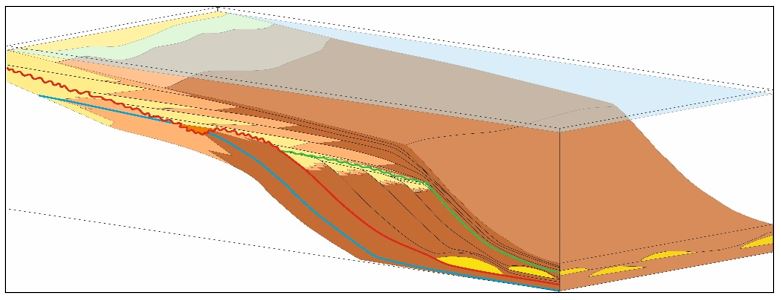Table of Contents
The Transgressive Systems Tract (TST)
As the rate of sea level rise increases after the stillstand/slow increase at the end of LST deposition, the continental shelf begins to be progressively submerged again as the coastline migrates back across the shelf towards the hinterland. Retrogradational parasequences develop towards the inner parts of the shelf and more distal parts of the shelf and slope experience sediment starvation and the onset of condensed sections across the slope and basin floor. Rivers are no longer necessarily confined to valleys and more floodplains develop inboard of the coastline.

Retrograde sediments of the TST which onlap the MRS/TS and (on the shelf) the SB.
Organisms respond to this change generally in a positive way. As transgression occurs and the shelf is resubmerged, marine fossil assemblages progressively overlie marginal or non-marine assemblages that existed when the shelf was exposed. The returning marine waters to the (previously exposed) continental shelf opens up a huge variety of new environmental niches which are colonised at first by “pioneer” species of high numbers but low diversity, then these are eventually - as conditions stabilise - replaced by better adapted organisms and diversity increases.
The rate of sea-level rise during the TST is at its highest and water-depths show a gradual net increase as sedimentation and the rate of rise in the sea-floor cannot match that of the sea-level. This is reflected in fossil assemblages by “deepening upwards” trends (e.g., a gradual increase in the % of planktonic microfossils compared with benthic ones) vertically through the sediments of the TST.
